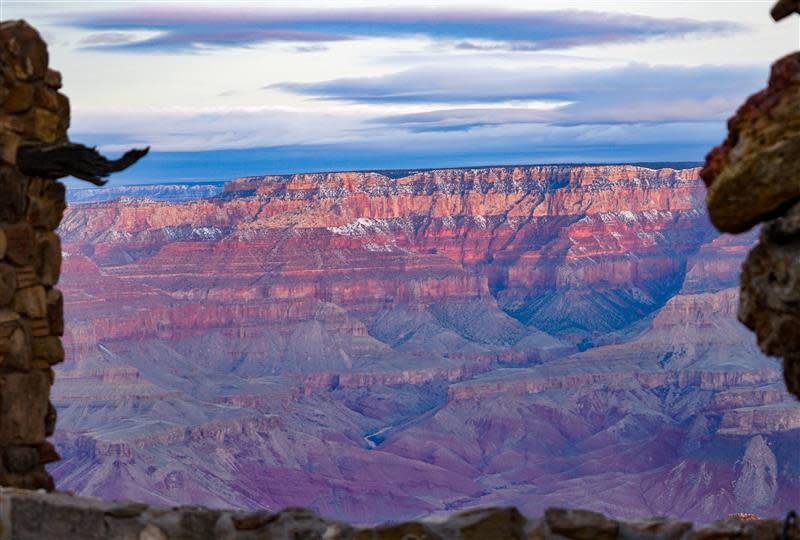Photos can’t compare to seeing Grand Canyon in person. What to know if you go.
Each year, millions of travelers are drawn to Grand Canyon National Park.
Even though it’s widely photographed, nothing compares to seeing this natural wonder of the world in person.
Its sheer size (277 miles), as well as the marvel of its formation millions of years ago through erosion from the Colorado River, make it a special place.
And whether hiking or riding a mule to the bottom, or soaking in views along the rim, visitors are awed by its striking, steep walls of limestone, shale and sandstone rock.
Here’s what travelers should know about the Grand Canyon, one of America’s most popular national parks and the latest in USA TODAY’s yearlong series:

Where is the Grand Canyon located exactly?
Nature's grand spectacle of towering red rocks lies along the Colorado River in northwest Arizona.
But not all of it is managed by the National Park Service. The park notes popular Havasu Falls and Grand Canyon Skywalk sit on tribal lands, and a portion of the canyon also extends into Kaibab National Forest.
The nearest major airport to the park’s popular South Rim is Phoenix Sky Harbor International,
That’s upward of 3.5 hours away by car. However, American Airlines offers service to Flagstaff Pulliam Airport, which is 1.5 hours away by car.

Which part of the Grand Canyon is closest to Las Vegas?
Grand Canyon’s West Rim is roughly 125 miles away from Las Vegas.
This part of the canyon lies within the Hualapai Indian Reservation, not the national park.
Admission to Grand Canyon West starts at $49. Access to the Grand Canyon Skywalk, a glass-bottom walkway that extends out over the canyon, costs extra.
Who are the Indigenous people of the Grand Canyon?
Eleven tribes are historically associated with the canyon, according to the park:
? Kaibab Band of Paiute Indians
? Moapa Band of Paiute Indians
? San Juan Southern Paiute Tribe

Is North Rim as good as South Rim?
Both are beautiful.
The vast majority of people visit the South Rim, which is about 230 miles from Phoenix and is open year-round. It features stunning overlooks like Mather Point and Hopi Point and the park’s most popular trail into the canyon, Bright Angel Trail.
The far-less-traveled North Rim is located about 350 miles from Phoenix. It also offers scenic vistas, as well as hiking and camping opportunities with fewer crowds. But services, lodging, campgrounds and restaurants are only available from mid-May to mid-October. North Rim roads are completely closed from December through mid-May.
Some of the most adventurous travelers brave the 21-mile Rim-to-Rim hike connecting the South and North Rims.

Can you drive your car in Grand Canyon National Park?
Visitors who prefer to drive can take a 215-mile journey from North Rim Village to South Rim Village.
There’s also a scenic 23-mile drive, Desert View Drive, between Grand Canyon Village and Desert View in the South Rim.

How much does it cost to stay at Grand Canyon National Park?
There is a $35 entry fee for private vehicles at the park. Entry passes are good for seven days.
Standard campsite fees start at $18 nightly. Backcountry camping costs $10 plus extra nightly fees depending on the number of campers and location above or below the canyon rim.
There are also several lodges in Grand Canyon Village and an RV park, managed by third parties whose rates range widely by season and venue. For example, a one-night stay for two adults and two children can cost under $100 at Bright Angel Lodge or Maswik Lodge in February and roughly $580 at El Tovar Hotel in June.
Free admission: When you can visit national parks for free this year
What is the best time to go to the Grand Canyon?
Spring and autumn months offer milder temperatures and fewer crowds than the summer, though fall weekends still see crowds. Winter can be serene, but visitors will need to be prepared for snowy weather and road closures.
This article originally appeared on USA TODAY: Grand Canyon National Park lives up to its name. How to take it all in.
